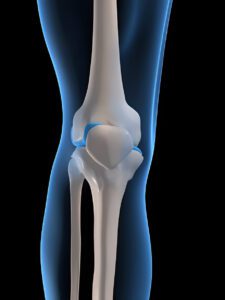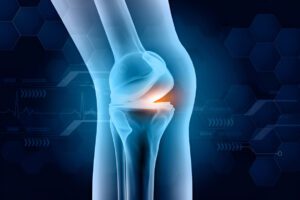Get Moving Again Exercises to Boost Function After Joint Fusion
Joint fusion surgery can be a life-changing procedure. While it might limit the movement of the fused joints, it often alleviates pain and stabilizes the bones. This can be a huge relief for people suffering from arthritis, severe fractures, or other joint disorders. But what’s next after the surgery? For most patients, the road to recovery is paved with exercises specifically designed to improve function and mobility. This blog post is here to guide joint fusion patients, post-surgery rehab seekers, and fitness enthusiasts through exercises aimed at regaining strength and enhancing overall function.
Understanding Joint Fusion
Joint fusion is a surgical procedure that involves fusing the bones in a joint to eliminate pain and provide stabilization. This surgery is commonly performed on areas such as the spine, ankles, wrists, and fingers. The main purpose of joint fusion is to relieve pain in a joint that is severely damaged or arthritic. By eliminating movement in the joint, the surgery reduces pain significantly.
After surgery, the fused joint won’t move like it used to, but the surrounding muscles and joints can often compensate for this loss. This makes understanding the procedure and its implications crucial for planning effective rehabilitation. Patients must work with healthcare professionals to ensure they follow a structured rehab program that focuses on improving function while avoiding stress on the fused joint.
The Importance of Post-Surgery Rehab

Rehabilitation plays a vital role in recovery after joint fusion surgery. It’s not just about healing; it’s about regaining strength, flexibility, and function in the affected area. Engaging in post-surgery exercises can prevent complications such as stiffness or muscle atrophy. It also helps in maintaining a healthy weight, which is essential for reducing stress on joints.
Regular rehabilitation exercises improve circulation, which can enhance the healing process. They also encourage muscle strength, allowing patients to return to daily activities faster. The better the rehab program, the more likely patients are to achieve a satisfactory level of function and mobility post-surgery.
Exercises for Lower Body Joint Fusion
Hip Joint Fusion
For those who have undergone hip joint fusion, it’s important to engage in exercises that strengthen the surrounding muscles without putting stress on the hip itself. Seated leg lifts and gentle side leg raises can help strengthen the quadriceps and glutes. These exercises can be done with minimal equipment, making them accessible for most patients.
Knee Joint Fusion
Knee joint fusion patients can benefit from exercises like quad sets and straight-leg raises. These exercises aim to maintain muscle tone and encourage circulation in the legs. It’s essential to perform these exercises slowly and progressively, ensuring that no undue stress is placed on the fused knee.
Exercises for Upper Body Joint Fusion

Shoulder Joint Fusion
For shoulder joint fusion patients, maintaining mobility and strength in the upper body is crucial. Exercises such as wall push-ups and bicep curls can strengthen the arms and shoulders. Stretching exercises that target the triceps and chest can also help in maintaining flexibility.
Wrist Joint Fusion
Those recovering from wrist joint fusion should focus on exercises that promote strength in the forearm and hand. Wrist curls and finger stretches can enhance grip strength and improve overall wrist function. Using resistance bands can add variety to these exercises, providing an effective workout for the forearm muscles.
Incorporating Cardio and Flexibility
Adding cardio and flexibility exercises into a rehab routine is beneficial for overall health and function. Low-impact cardio exercises like walking or cycling can improve cardiovascular health without putting excess strain on the joints. Swimming and water aerobics are excellent options as the water supports the body and reduces joint stress.
Flexibility exercises, including yoga and Pilates, can aid in maintaining a wide range of motion. These activities not only stretch the muscles but also improve balance and coordination. Always consult with a healthcare professional before starting any new exercise routine to ensure it’s safe given your specific condition.
Lifestyle Modifications
Supporting recovery and long-term joint health goes beyond exercises. Incorporating lifestyle modifications can make a significant difference. Maintaining a healthy diet plays a crucial role. Eating foods rich in calcium and omega-3 fatty acids can strengthen bones and reduce inflammation.
Additionally, ergonomic adjustments at home and work can help prevent unnecessary strain on joints. Using assistive devices like grab bars in the bathroom or ergonomic keyboards can support daily activities without overburdening the joints. Consistency in following these lifestyle changes can lead to sustained improvements in joint function.
Recovering from joint fusion surgery is a unique journey for each individual. Exercises tailored to the type of joint fusion can significantly improve function and quality of life. By understanding the surgery, engaging in post-surgery rehab, and making lifestyle modifications, patients can achieve a successful recovery and get back to their daily lives.
This blog post serves as a guide to empower patients and rehab seekers, offering practical advice and support throughout their recovery process. For those looking to explore more or begin a tailored rehabilitation program, consulting with physical therapists and healthcare providers is a valuable next step in the recovery path.

